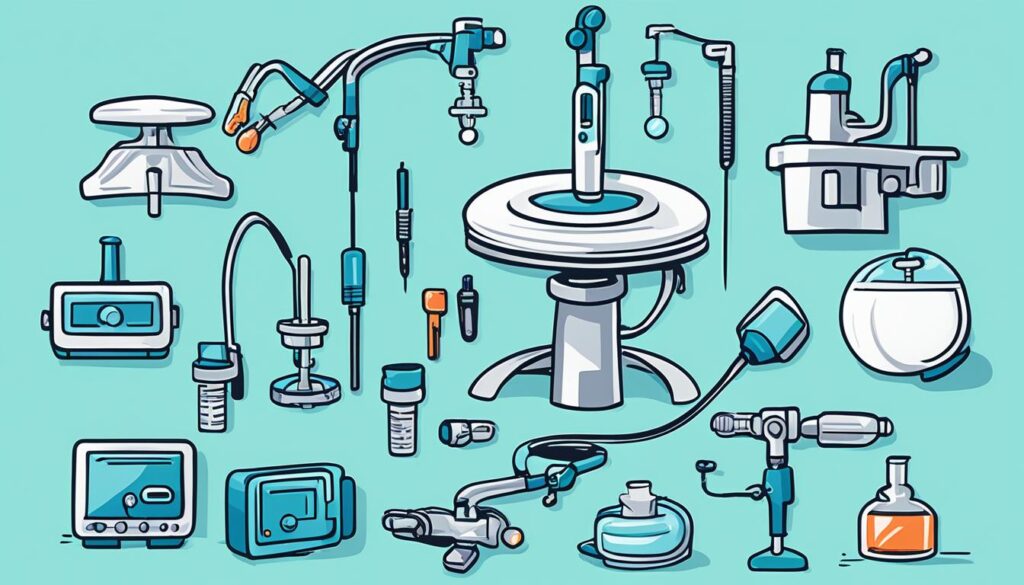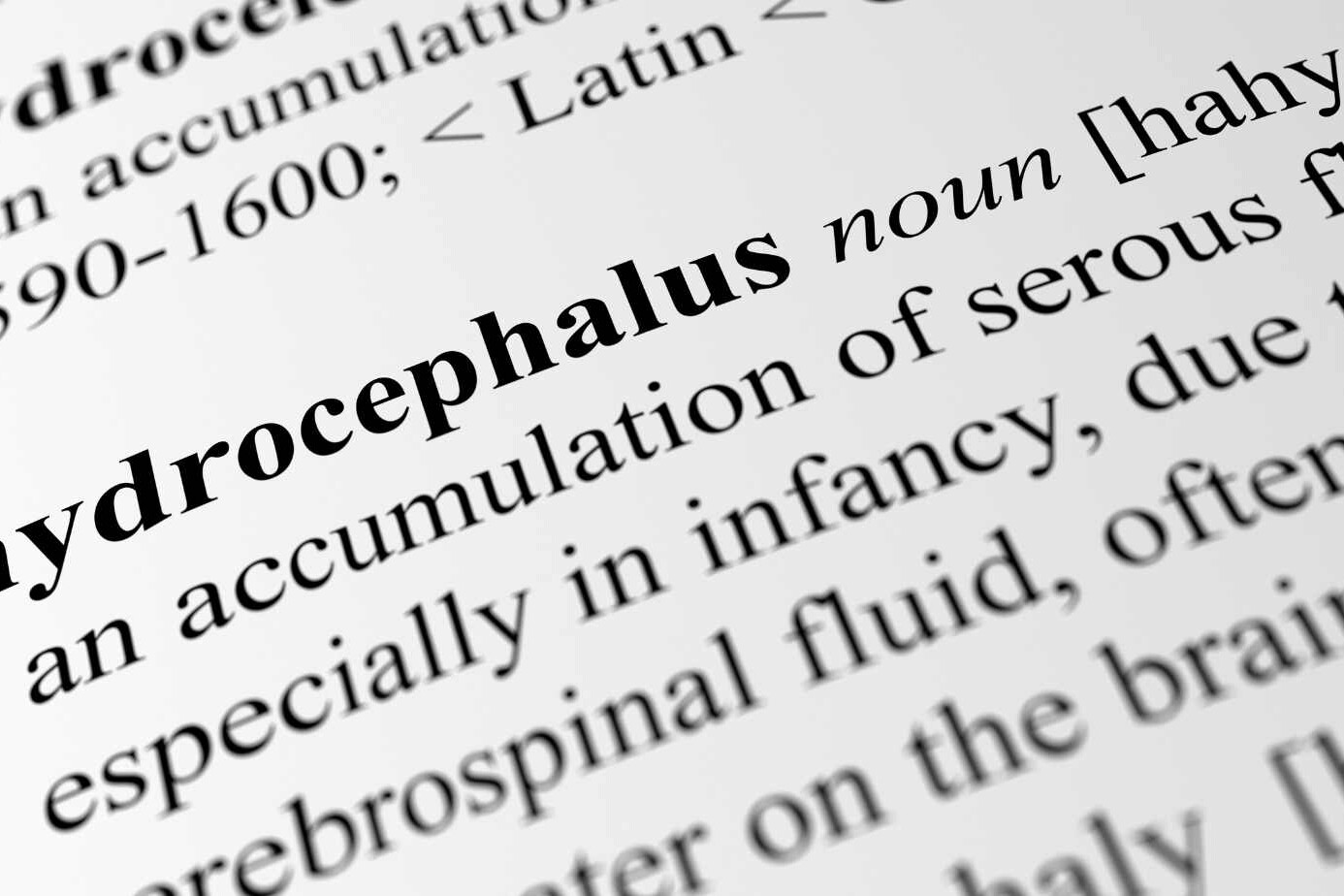If you’ve been diagnosed with hydrocephalus, you’re looking for treatment info. This condition means there’s too much cerebrospinal fluid (CSF) in the brain. It can lead to harmful pressure on the brain. Hydrocephalus can happen at any age, but it’s most common in infants and adults over 60.
The good news is that hydrocephalus can be treated. Surgeries are available to help lower the brain’s pressure. These surgeries redirect the extra CSF away from the brain. The two main surgeries are shunt surgery and endoscopic third ventriculostomy (ETV). It’s important to know about these treatments to manage the condition and improve your life.
Table of Contents
ToggleUnderstanding Hydrocephalus
Hydrocephalus is when too much CSF fills the brain’s ventricles. This causes pressure on the brain. It’s important to know what causes hydrocephalus and how to treat it.
What is Hydrocephalus?
Hydrocephalus is when CSF builds up, putting pressure on the brain. This comes from too much fluid in the brain’s cavities. It can hurt the brain and cause problems.
Causes of Hydrocephalus
CSF production can increase, or the body might not absorb it well. It can also happen if something blocks its flow. Birth defects, tumors, injuries, or illnesses can lead to hydrocephalus.
Types of Hydrocephalus
There are different types of hydrocephalus based on its cause. This includes acquired, congenital, and more. Knowing the type helps doctors treat it better.
There are types like Communicating and Non-communicating Hydrocephalus. They differ in how CSF flows. Normal Pressure Hydrocephalus is common in the elderly. For adults, there’s also Hydrocephalus Ex-vacuo from degenerative diseases like Alzheimer’s.

| Type of Hydrocephalus | Description | Prevalence |
|---|---|---|
| Communicating Hydrocephalus | No obstruction to CSF flow within the ventricular system | Varies |
| Non-communicating (Obstructive) Hydrocephalus | Blockage along one or more passages connecting the ventricles | Varies |
| Normal Pressure Hydrocephalus (NPH) | Dilated ventricles with normal pressure, most common in the elderly | Approximately 175 per 100,000 in the elderly population, exceeding 400 per 100,000 for those over 80 years old |
| Hydrocephalus Ex-vacuo | Primarily affects adults, associated with degenerative diseases like Alzheimer’s, stroke, or trauma | Varies |
Diagnosing Hydrocephalus
Finding the symptoms of hydrocephalus is very important. The signs can vary by age and how much extra fluid is in the brain. This first step is key to getting the right treatment.
Symptoms of Hydrocephalus
Infants with hydrocephalus may have a big head and a bulging soft spot. They might also vomit a lot and be very irritable. In older children and adults, signs may look like bad headaches, throwing up, eyesight issues, trouble moving, thinking problems, and even peeing by accident.
Diagnostic Tests
Doctors will check you out to diagnose hydrocephalus. They will ask many questions and look closely at how your brain is working. They might also do tests like CT scans, MRIs, and a lumbar puncture. These tests help see if there is too much fluid and what causes it.
MRI scans take detailed pictures of the brain using radio waves and magnets. They show the fluid-filled spots very clearly. For babies, ultrasound can be the first choice as it’s safe and finds problems without hurting. Sometimes, in an emergency, CT scans might be used. They look through the brain but are not as clear as MRIs.
After looking at symptoms and test results, doctors can tell if it’s hydrocephalus. This helps them plan the right treatment. The goal is to manage the fluid and reduce brain pressure.
Hydrocephalus Treatment
Hydrocephalus is often treated with surgery. This surgery aims to move too much cerebrospinal fluid away from the brain. It helps lower the pressure inside the head. The main surgeries for it are shunt surgery and endoscopic third ventriculostomy (ETV).
Shunt Surgery
Shunt surgery puts a thin tube, or shunt, to move extra fluid from the brain. It moves the fluid to another body part, usually the stomach, where it’s soaked up. This surgery lasts 1 to 2 hours and needs general anesthesia. Patients might stay in the hospital for a few days after.
Endoscopic Third Ventriculostomy (ETV)
ETV is another surgery for hydrocephalus. It makes a small hole in the brain’s bottom. This hole lets out the stuck fluid to be soaked up, skipping the blockage. The ETV surgery takes about 1 hour and uses general anesthesia. It is safer from infection than shunt surgery.
The surgery type chosen depends on what caused the hydrocephalus. Both shunt surgery and ETV can be used to treat it. This includes cases of hydrocephalus from birth or happening later in life.

Surgical Considerations
The cure for hydrocephalus often needs surgery. These operations have their own risks and troubles that we must know. Knowing this helps make good choices about your [hydrocephalus treatment] for the best results.
Risks and Complications
Shunt surgery puts a thin tube to lead extra fluid away from the brain. Though it works well, shunts might fail, block, or cause infections. This can mean more surgeries. Another method, ETV, can cause bleeding and infections too.
Recovery and Follow-up Care
After any surgery for hydrocephalus, healing and follow-up care are key. You might need rehab for nerve issues. Also, you’ll get regular tests and checks to see how well the treatment is doing and to catch issues early. This all helps make your long-term health and life better.
Non-Surgical Treatment Options
While surgery is often used to treat hydrocephalus, non-surgical options exist. These are mainly for those with normal pressure hydrocephalus.
One option to consider is lumbar drainage or lumbar infusion testing. This helps see if shunt surgery would be beneficial. Also, therapies like physical and occupational therapy can be helpful. They deal with any ongoing brain or development problems. These methods are key in managing hydrocephalus and boosting life quality.
A study in 2015 looked at endoscopic third ventriculostomy (ETV) for idiopathic normal pressure hydrocephalus (iNPH).
Another research that year, found in the Lancet Neurology, checked lumboperitoneal shunts for iNPH.
These non-surgical choices, matched with therapy, can greatly help treat hydrocephalus. This improvement leads to better patient experiences.
Living with Hydrocephalus
Hydrocephalus is a condition that can be tough to manage in the long term. But, with proper support, many can lead full lives. One example is Brock, who was diagnosed at 3 years old in 2000.
Coping and Support Resources
Managing the symptoms like headaches and vision issues can be hard. But, there are help and support out there. The Hydrocephalus Association offers guidance, support, and access to resources.
Healthcare professionals are also key in care. Brock’s team, including Dr. Eze Goldschmidt from UCSF, ensures he gets what he needs.
Brock stays active and positive, involved in sports and study. He graduated with a master’s in occupational therapy. By staying proactive and using the right resources, Brock thrives with his hydrocephalus.
Preventive Measures
Hearing that the causes of hydrocephalus are not always clear can be worrying. But, there are steps you can take to lower the risks. One vital thing is to make sure you and your family get all the advised vaccines. The meningococcal vaccine, for instance, can help stop meningitis. This disease is a key player in hydrocephalus cases. Getting vaccinated is extra important for those with health issues or who plan to travel to risky places.
Vaccinations
The Centers for Disease Control and Prevention (CDC) says we should all get vaccinated against meningitis if we’re at risk. This includes preteens, teenagers, and folks who are headed to places where the risk is high. Doing this keeps you and your loved ones safe from a dangerous illness. Plus, it lowers the chances of dealing with hydrocephalus later on. For the best health outcome, aim to keep your vaccinations current.
Conclusion
Hydrocephalus is a tough, but treatable, brain issue. It needs quick treatment to avoid brain damage. Knowing about the treatments, like shunt surgery and ETV, is key for you and your family.
Working with doctors and getting help can make things better for those with hydrocephalus. Learning the symptoms and causes is vital. It helps manage the condition.
Today, technology and support make living with hydrocephalus easier. Staying informed and having a good attitude is important. It lets you face the challenges and enjoy life.
FAQ
What is hydrocephalus?
Hydrocephalus is a condition where there’s too much CSF in the brain’s ventricles. This builds up and presses on the brain.
What causes hydrocephalus?
It can be caused by too much CSF, not enough absorption, or a block. The block stops the CSF from flowing properly.
What are the symptoms of hydrocephalus?
Symptoms vary by age and how serious it is. Infants might have a big head, a swollen soft spot, and be irritable. Adults and kids might get headaches, feel sick, or have trouble seeing and moving.
How is hydrocephalus treated?
The main treatment is surgery. It helps the extra CSF drain away. Surgery can be by shunt or through ETV.
What are the risks and complications associated with hydrocephalus treatment?
Shunt surgery and ETV have risks. Shunts might get blocked or cause infections. ETV could lead to bleeding or infections.
Are there any non-surgical treatment options for hydrocephalus?
Sometimes, non-surgical ways are used, like lumbar drainage tests. Supportive therapies like physical and occupational therapy can also help.
How can individuals with hydrocephalus cope and access support resources?
There are many support groups and organizations. They offer info, emotional support, and help finding community resources. Doctors can also connect you to the right services.
Are there any preventive measures for hydrocephalus?
To help prevent hydrocephalus, make sure kids get their shots. The meningitis vaccine can stop hydrocephalus from meningitis.
Source Links
- https://www.mayoclinic.org/diseases-conditions/hydrocephalus/diagnosis-treatment/drc-20373609
- https://www.nhs.uk/conditions/hydrocephalus/treatment/
- https://www.aans.org/en/Patients/Neurosurgical-Conditions-and-Treatments/Hydrocephalus
- https://www.ncbi.nlm.nih.gov/books/NBK560875/
- https://www.aans.org/Patients/Neurosurgical-Conditions-and-Treatments/Adult-Onset-Hydrocephalus
- https://emedicine.medscape.com/article/1135286-treatment
- https://emedicine.medscape.com/article/247387-treatment
- https://www.ncbi.nlm.nih.gov/pmc/articles/PMC4743412/
- https://fluidsbarrierscns.biomedcentral.com/articles/10.1186/s12987-016-0025-2
- https://neurosurgery.ucsf.edu/news/thriving-hydrocephalus-brock-albees-inspirational-story
- https://coc.unm.edu/common/manual/hydrocephalus.pdf
- https://www.ncbi.nlm.nih.gov/pmc/articles/PMC9434947/
About The Author

This article is medically reviewed by Dr. Chandril Chugh, Board-Certified Neurologist, providing expert insights and reliable health information.
Dr. Chandril Chugh is a U.S.-trained neurologist with over a decade of experience. Known for his compassionate care, he specializes in treating neurological conditions such as migraines, epilepsy, and Parkinson’s disease. Dr. Chugh is highly regarded for his patient-centered approach and dedication to providing personalized care.
→ Book a consultation to discover which remedies suit your needs best.




